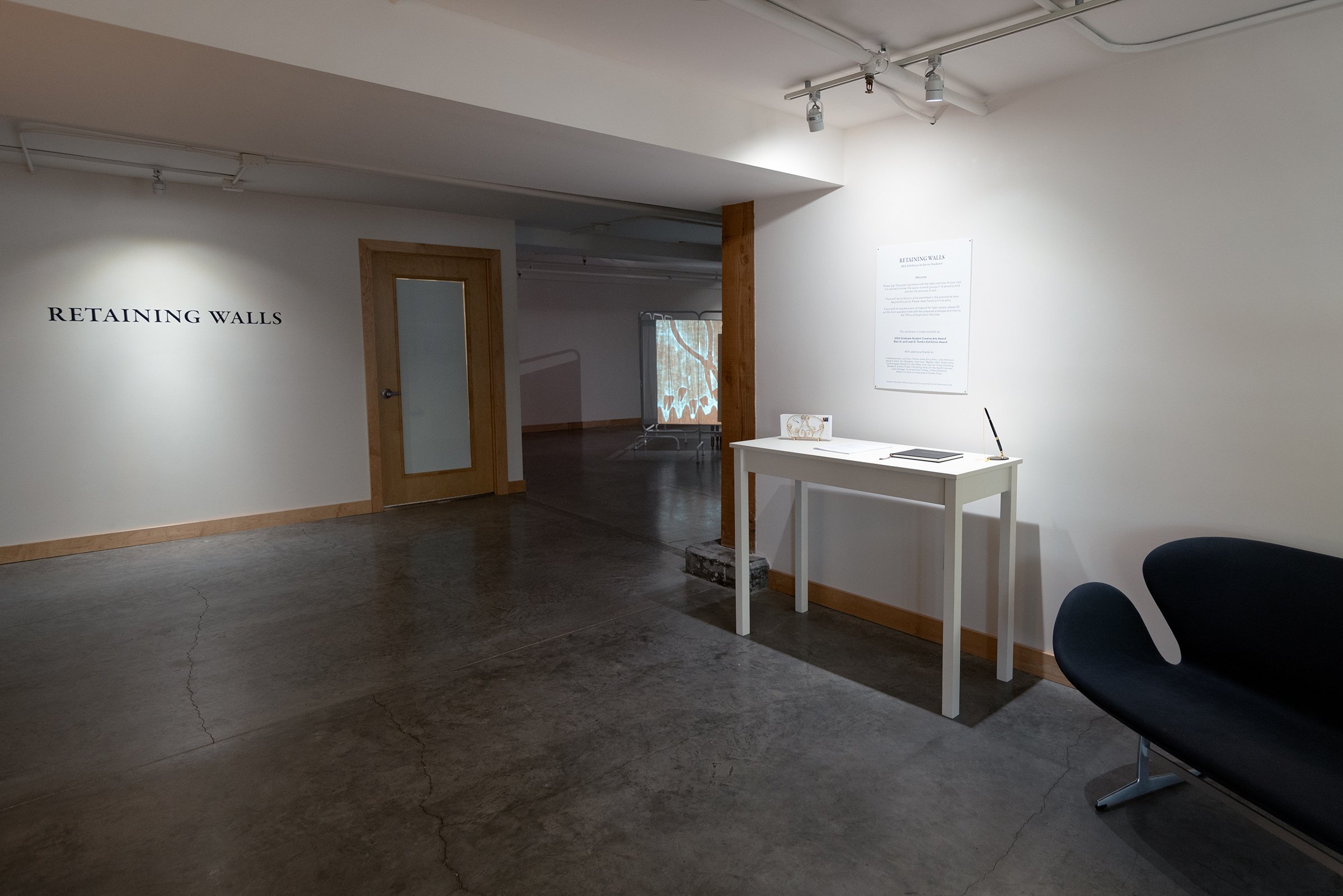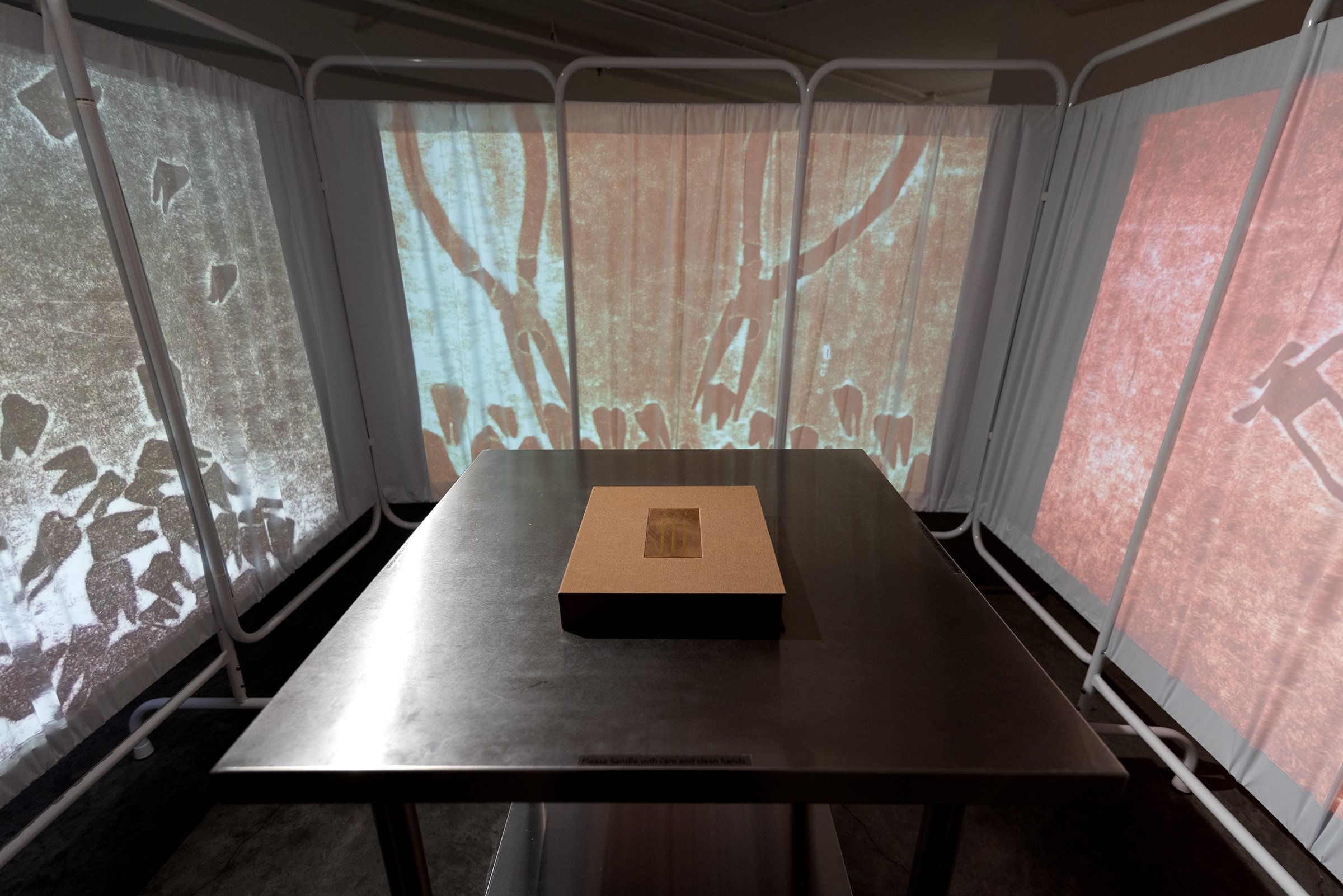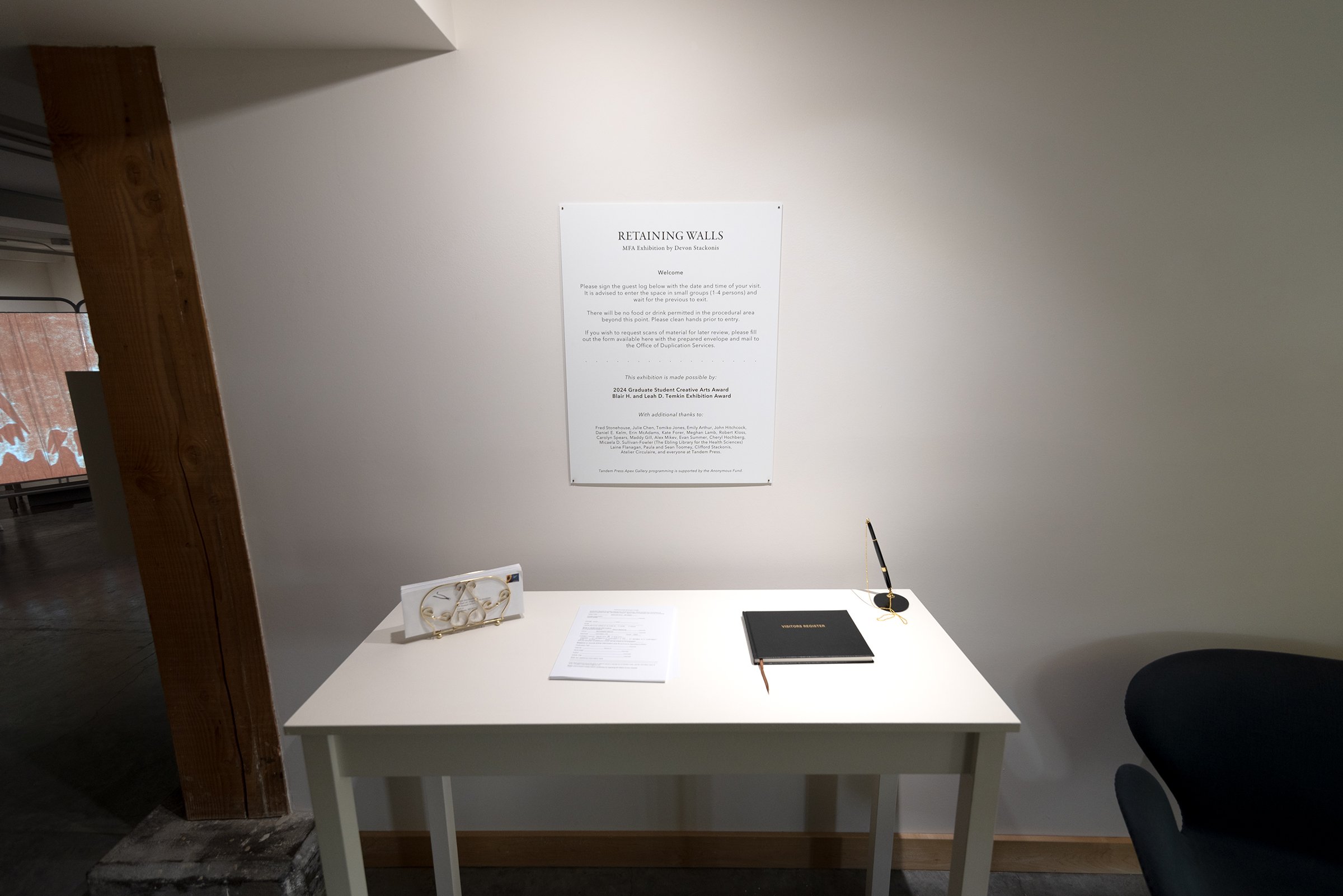RETAINING WALLS is an artist book installation rooted in ancestral lineage, resource extraction, and inhabitation of the Pennsylvania Coal Region. Echoing the form of 19th-century dental manuscripts, this bound series of etchings addresses the lasting psychological, health, environmental, and socioeconomic impacts of an obsolete industry.
Spanning the last decade, my work has dealt with my ancestral labor history, resource extraction, and inhabitation of the Pennsylvania Coal Region. Ancestors on both sides of my family immigrated to Pennsylvania in the late 19th century and worked in coal mines tunneled into the distinctive Anthracite veins which run along the Appalachian Mountain range. My great, and great great grandfathers who worked in these mines had their lives cut short in the industry, with few surpassing the age of forty. Several generations later, some members of my family still reside there, amidst the steep mountains and black piles of coal waste, rivers tainted orange with acid mine drainage, and dilapidated mining structures which remain. Echoing the form of 19th century medical and dental manuscripts, RETAINING WALLS addresses the lasting psychological, health, environmental, and socioeconomic impacts of an obsolete industry.
In my research surrounding coal mining disasters and occupational health hazards in the late nineteenth and early twentieth centuries, I also revisited the story of my grandmother and her twelve siblings having their secondary teeth forcefully removed at a young age in the coal regions of Northeastern Pennsylvania. I began exploring the shared language of teeth and the coal mining industry in my writing as well as conditions that apply to both: extraction via drilling and pulling, collapsing roofs and interior spaces, receding and eroding surfaces, retaining walls and supports, and the more common connecting phrase, mouth of the mine. I am interested in the environmental and health conditions which continue to surface even after the most invasive extractive operations had closed, and those which appear in generations thereafter.
Over the past 15 years, I have endured my own medical and dental problems, cranio-facial chronic pain, and several ineffective surgeries and procedures. As I was undergoing intensive TMJ treatment and postural therapy over the past three years, I thought much more about teeth and jaw alignment, and how repetitive labor, prolonged stress or misuse can change or limit the function of one’s body. In this work, I consider epigenetics which involves intergenerational transmission of trauma. Existing in an impoverished community, drinking affected water, and being exposed to industrial waste will certainly affect one’s health, however, a parent’s exposures, elements of lifestyle, and traumatic experiences can also be passed to the next generation. While drawing material connections to my ancestral labor history, I also began to see behavioral patterns, abusive cycles, and poor overall health perpetuated by living conditions.
RETAINING WALLS intimately explores these themes with a semi-fictional narrative based on my experiences in Central and Northeastern Pennsylvania. I express observations of my own chronic pain and vague diagnosis and of people I lived with at the time and strangers whose behavioral tendencies or physical ailments mirrored the conditions of the landscape in uncanny ways. The dream-like visual imagery invites association with the abstracted teeth forms, furthering the connection between the health of the land and bodily wellbeing. To some extent, we are all products of our external environments. To care for and maintain our own bodies, we must also care for the environments we inhabit. The embedded etchings are rendered from observed dental molds and cast impressions, which within this body of work serve as a symbol for extraction at the human-scale and more broadly as a symbol of extraction in the world: altered landscapes, uprooted communities, and the human cost of extractive industry.




































High resolution PDF of RETAINING WALLS available upon request.
























